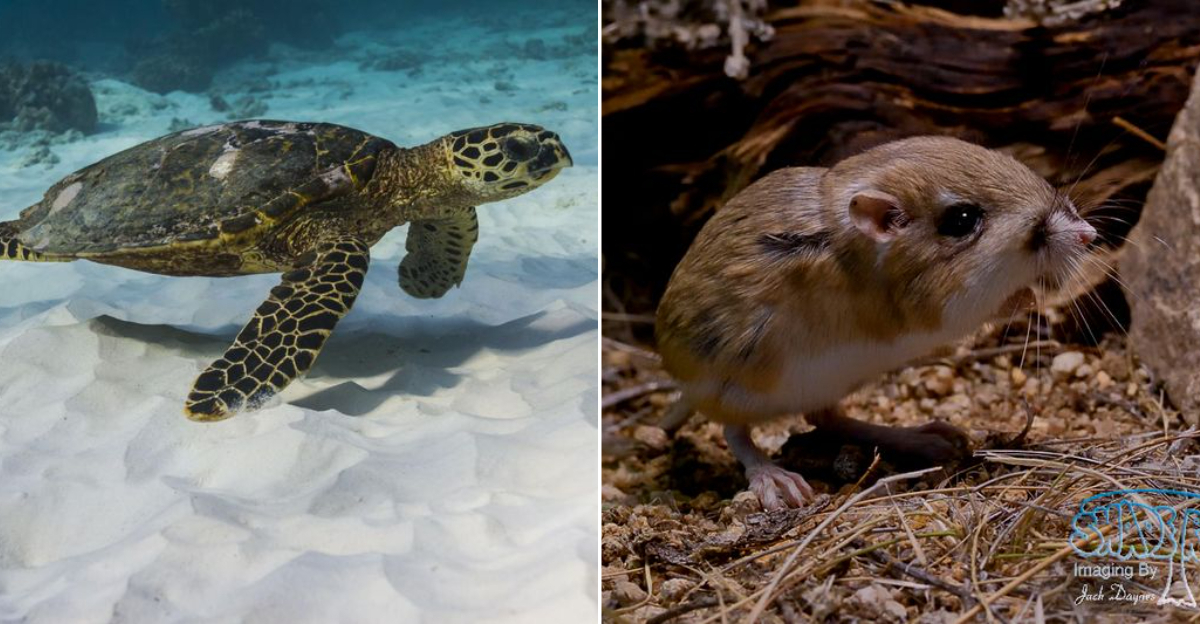Along the windswept shores of Padre Island National Seashore, Texas, nature puts on a show that’s anything but ordinary.
From sneaky crawlers in the dunes to curious creatures flitting across the waves, this stretch of coastline is home to an impressive lineup of wild critters.
Whether you’re scanning the sand or peeking through coastal grasses, every visit brings the chance to spot something unexpected. It’s a wild, wonderful world waiting just beyond the surf.
1. Kemp’s Ridley Sea Turtle: The Critically Endangered Beach Nester
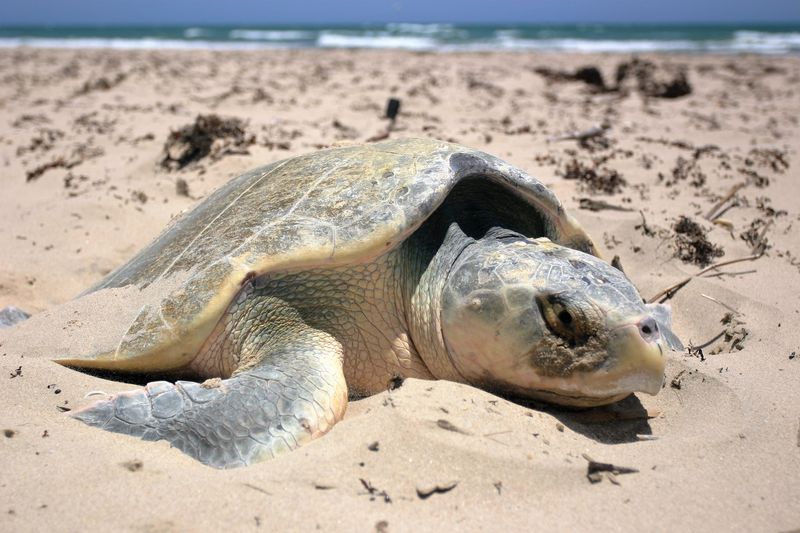
Rarest of all sea turtles, these olive-gray shellbearers make dramatic daytime nesting runs called “arribadas.” Watching dozens scramble ashore simultaneously ranks among nature’s most spectacular sights!
Female Ridleys dig perfect flask-shaped nests in the sand, depositing around 100 ping-pong ball sized eggs.
Padre Island’s conservation program has helped this critically endangered species slowly recover from near extinction.
2. Green Sea Turtle: The Vegetarian Ocean Grazer
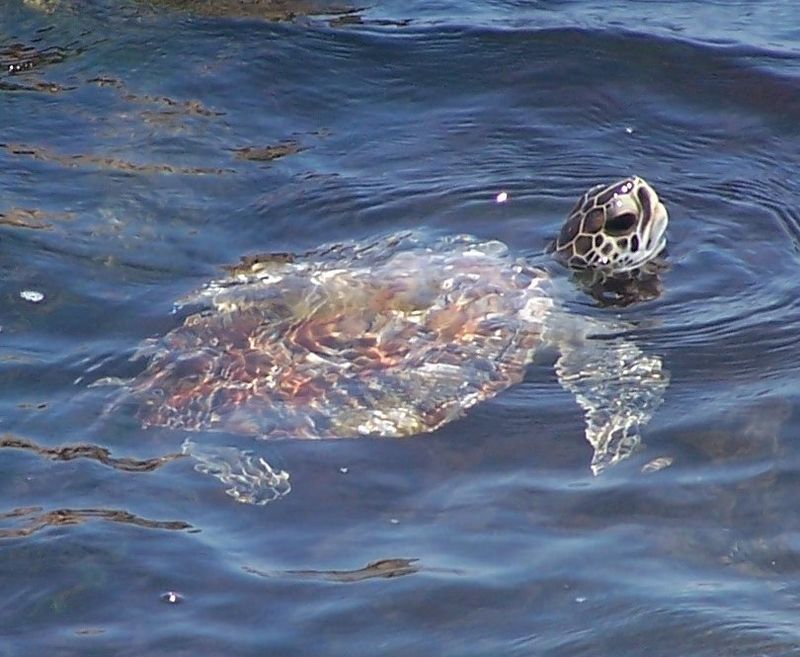
Named for their greenish body fat (not their shells), these magnificent mariners can weigh up to 350 pounds!
Adults munch exclusively on seagrass and algae, making them the only herbivorous sea turtles. Spotting their smooth, heart-shaped shells bobbing in Padre Island’s shallows never gets old.
Young greens start life eating jellyfish and other protein-rich foods before switching to their veggie-only adult diet.
3. Loggerhead Sea Turtle: The Powerful Crusher
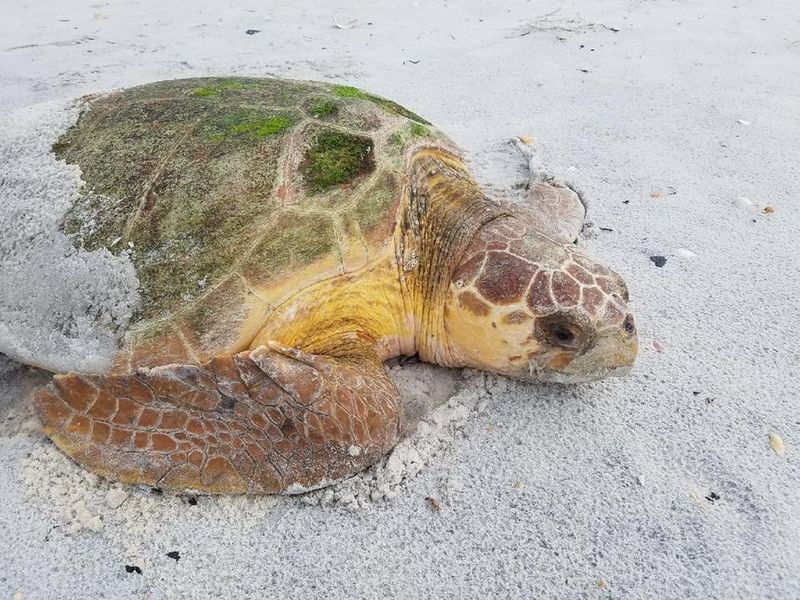
Sporting massive jaws that effortlessly pulverize hard-shelled prey, loggerheads got their name from their exceptionally large heads. Their reddish-brown shells can span up to three feet!
Masters of marathon migration, these impressive reptiles sometimes journey over 8,000 miles between feeding and nesting grounds.
Padre’s waters serve as crucial feeding habitat where they crush crabs, conchs, and clams with bone-crushing bites.
4. Leatherback Sea Turtle: The Deep-Diving Giant
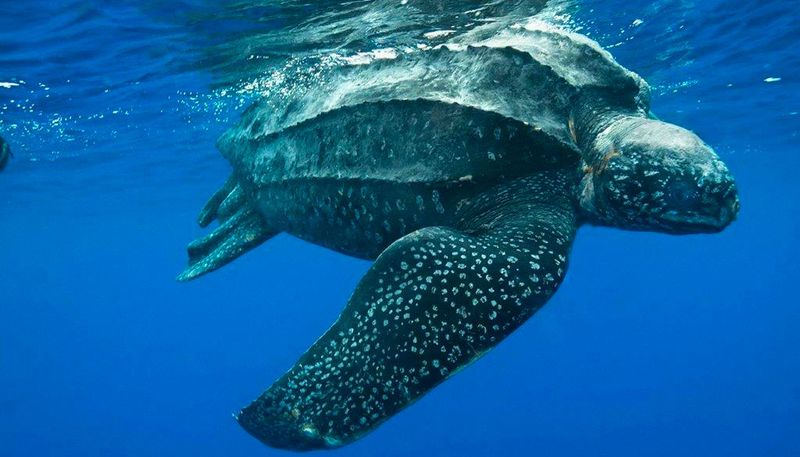
Absolutely enormous! These prehistoric-looking behemoths can reach 2,000 pounds and stretch seven feet long. Unlike other sea turtles, leatherbacks have no hard shell but instead sport a leathery, ridged carapace.
Record-breaking divers, they plunge deeper than any turtle—up to 4,000 feet—hunting jellyfish.
Though rare visitors to Padre Island, occasional sightings thrill wildlife enthusiasts who glimpse these ancient mariners that have existed virtually unchanged for 100 million years.
5. Hawksbill Sea Turtle: The Coral Reef Jewel
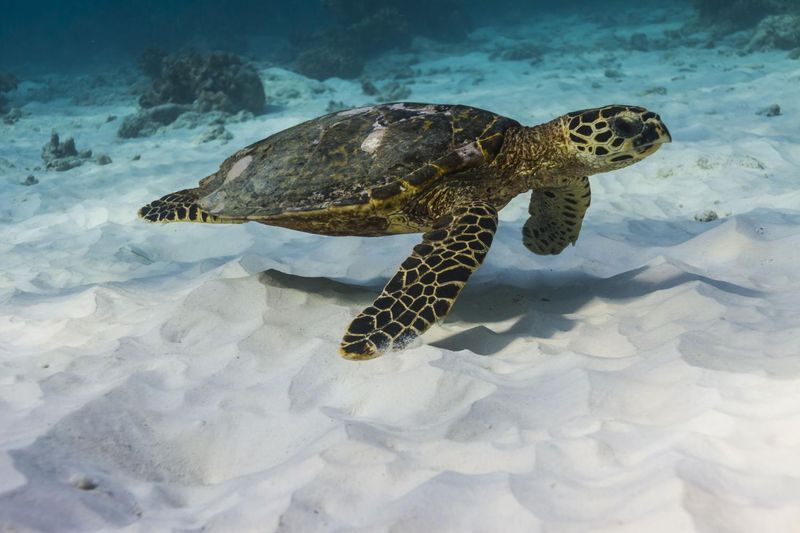
Gorgeous amber and brown overlapping shell plates (called scutes) make hawksbills the beauties of the turtle world.
Their narrow, pointed beaks perfectly wedge into coral reef crevices to extract sponges—their favorite food.
Sadly, these exquisite creatures were historically hunted for their stunning shells to make “tortoiseshell” jewelry.
Though uncommon at Padre Island, occasional hawksbill sightings remind us of the park’s importance as refuge for even the rarest marine travelers.
6. Coyote: The Adaptable Dune Prowler
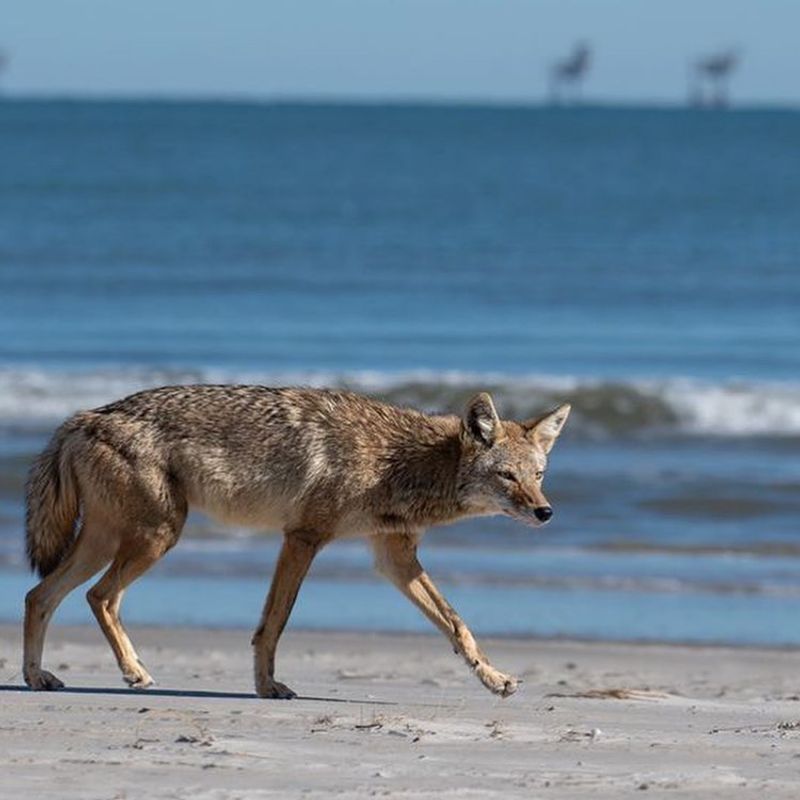
Moonlight silhouettes reveal these clever canines trotting along Padre’s dunes. Masters of adaptation, island coyotes have learned to hunt everything from rabbits to ghost crabs and even scavenge sea turtle eggs when nobody’s looking!
Early mornings offer your best chance to spot their distinctive bushy tails disappearing into sea oats.
Their haunting yips and howls provide the perfect soundtrack for island camping trips, reminding visitors they’re sharing this wilderness with wild neighbors.
7. White-tailed Deer: The Dune-Dwelling Browsers
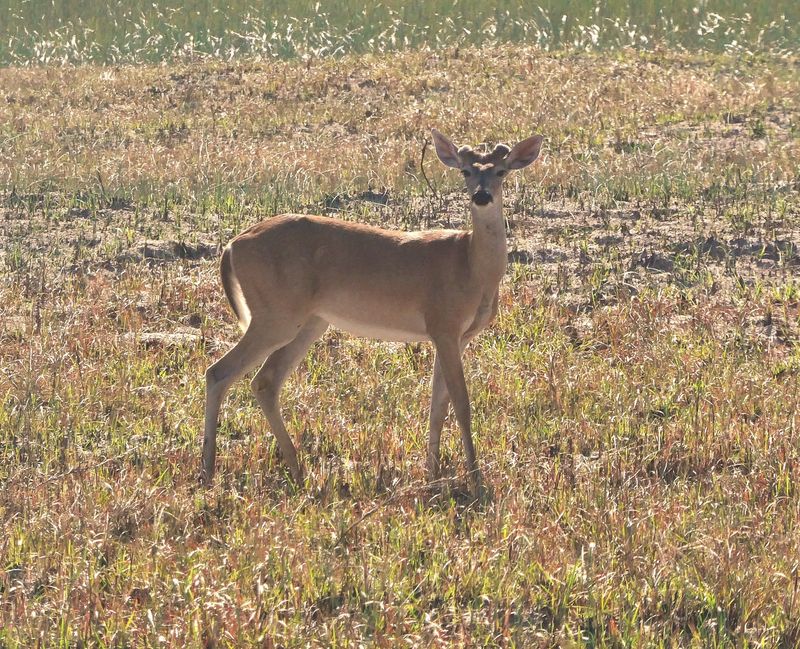
Surprisingly petite compared to their mainland cousins! Island white-tails have adapted to thrive in this harsh environment by growing smaller and consuming unusual beach plants like sea purslane.
Dawn reveals their delicate tracks zigzagging between dunes. These resourceful ungulates have evolved remarkable salt-processing kidneys that allow them to drink brackish water that would harm other deer.
Watching a buck with velvet antlers emerge from morning fog creates unforgettable Padre Island memories.
8. Bobcat: The Elusive Dune Hunter
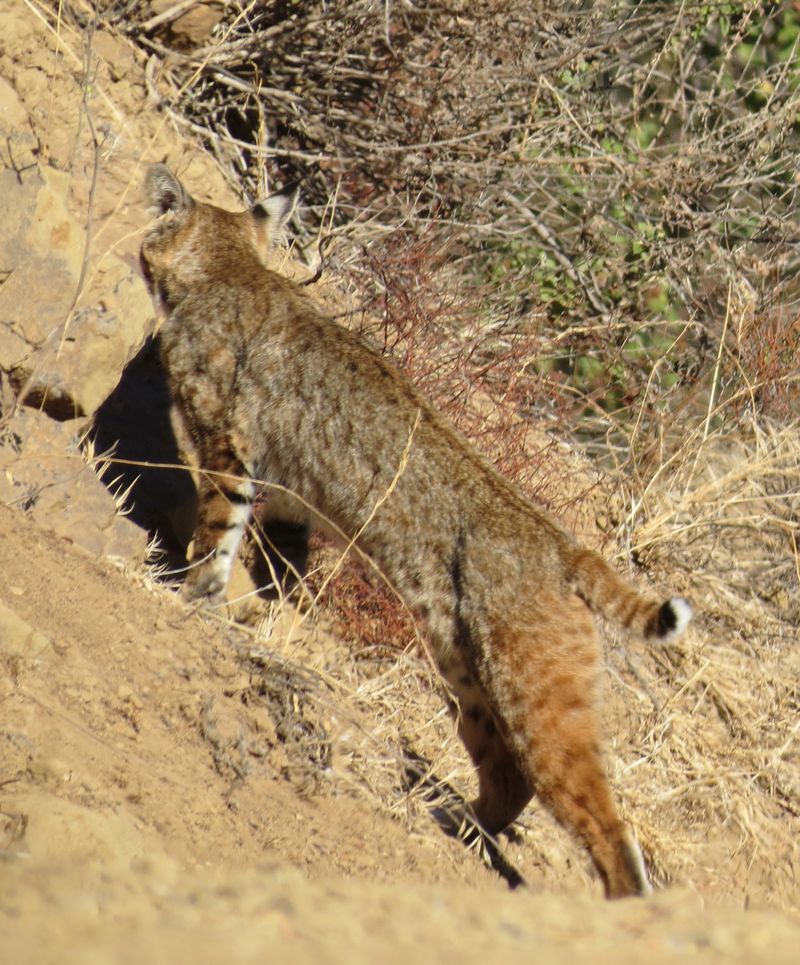
Rarely seen yet surprisingly common, these tufted-eared felines leave distinctive round tracks along Padre’s remote stretches.
Twice the size of house cats with gorgeous spotted coats, bobcats rule the island’s food chain as apex predators. Patient photographers might glimpse one pouncing on rodents in grassy areas at dawn.
Their remarkable adaptability to this harsh environment shows in their ability to extract water from prey rather than drinking fresh water—a crucial skill for surviving on a barrier island.
9. Spotted Ground Squirrel: The Sandy Acrobat
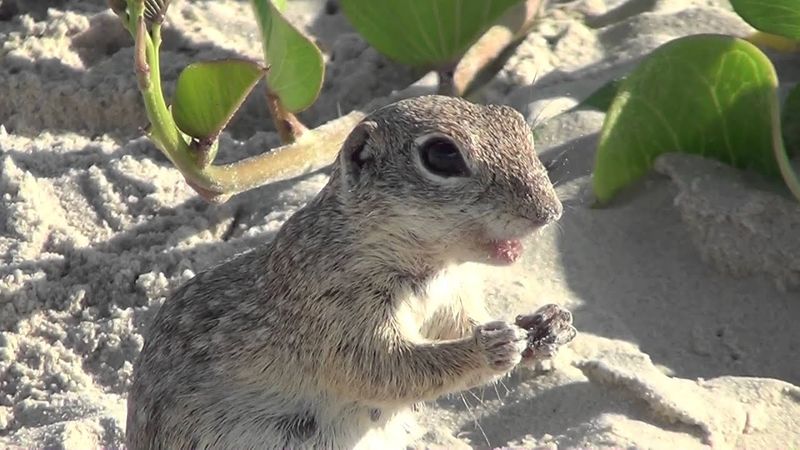
Adorably tiny with distinctive white spots sprinkled across their backs, these charismatic rodents dart between clumps of sea oats with impressive speed.
Their perpetual energy and curious nature make them Padre Island’s most entertaining small mammals to observe.
Master tunnelers, they create elaborate burrow systems beneath the dunes. Their cheek pouches bulge comically as they gather seeds to stash underground.
Listen for their high-pitched alarm calls when hawks soar overhead—nature’s early warning system!
10. Raccoon: The Beachcombing Bandit
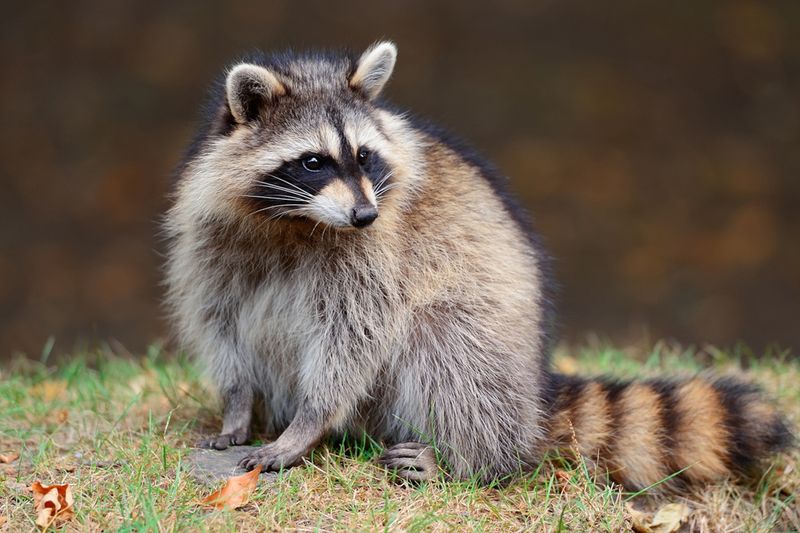
Notorious trash-raiders by reputation, Padre’s raccoons reveal their true nature as skilled shoreline hunters when observed away from campgrounds.
Their sensitive paws expertly probe tidal pools and wet sand for ghost crabs, clams, and other marine treasures. Moonlit nights showcase their distinctive masked faces and ringed tails as they patrol the surf’s edge.
Island raccoons have developed fascinating fishing techniques, wading into shallow water and using their front paws to feel for prey beneath the surface—nature’s ultimate opportunists!
11. Kangaroo Rat: The Desert Dancer
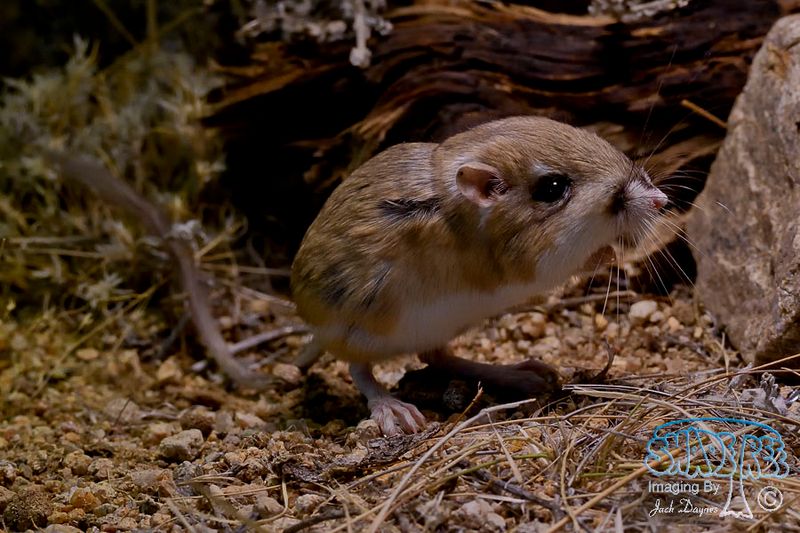
Bouncing across Padre’s interior dunes on oversized hind legs, these remarkable rodents never drink water!
Their specialized kidneys extract all needed moisture from dry seeds and plants—a desert survival superpower. Nocturnal adventures reveal their distinctive hopping locomotion and long tails used for balance.
Their enormous eyes and radar-like ears help detect predators in the darkness. Most fascinating of all, kangaroo rats can leap over three feet vertically to escape hungry snakes—nature’s tiny ninjas!
12. Western Diamondback Rattlesnake: The Desert Defender
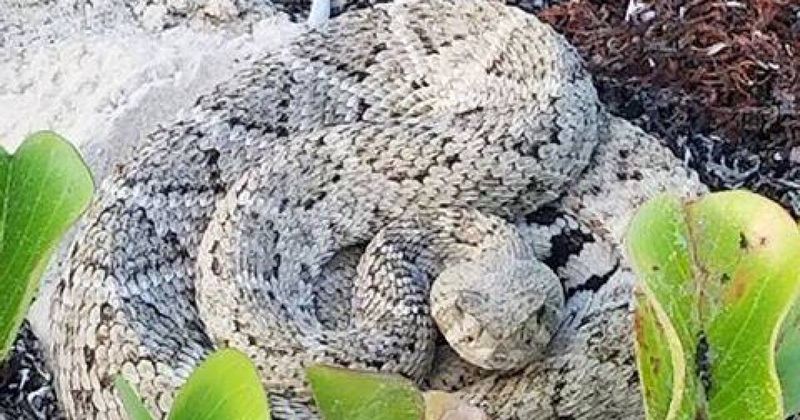
Unmistakable diamond patterns and that legendary rattle make these impressive reptiles Padre Island’s most respected residents.
Contrary to their fearsome reputation, these heat-sensing predators prefer avoiding human encounters altogether.
Masters of camouflage, they blend perfectly with dune shadows. Their distinctive tracks—straight lines with side-winding curves—reveal their presence in soft sand.
Though venomous, diamondbacks serve crucial ecological roles controlling rodent populations and deserve our respect from a safe distance.
13. Atlantic Mole Crab: The Wave-Riding Burrower
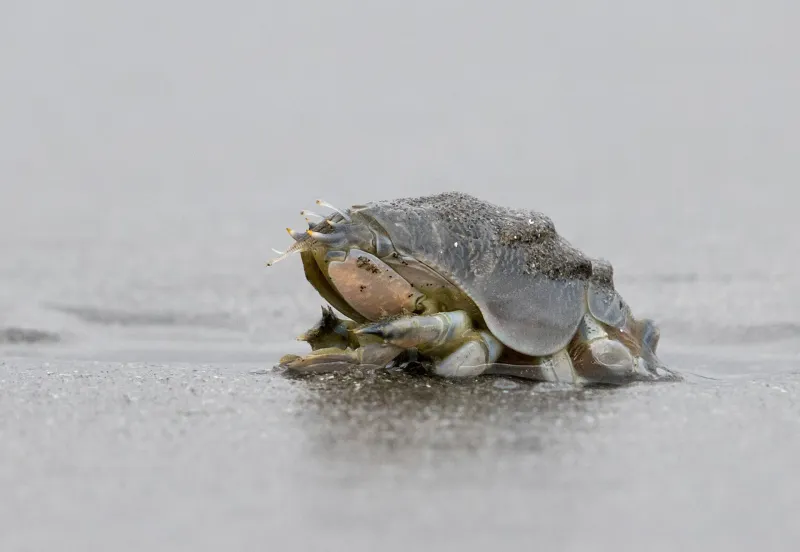
Tiny engineers of the tideline, these egg-shaped crustaceans (also called sand fleas) disappear beneath the sand with astonishing speed!
Their synchronized burrowing with each receding wave creates the tickling sensation beachcombers feel underfoot along the water’s edge.
Perfectly adapted for surf zone living, their antennae filter feed in the rushing water.
Watching handfuls of sand seemingly come alive as dozens burrow simultaneously fascinates children and adults alike. These humble creatures form a critical food source for many Padre Island shorebirds and fish.
